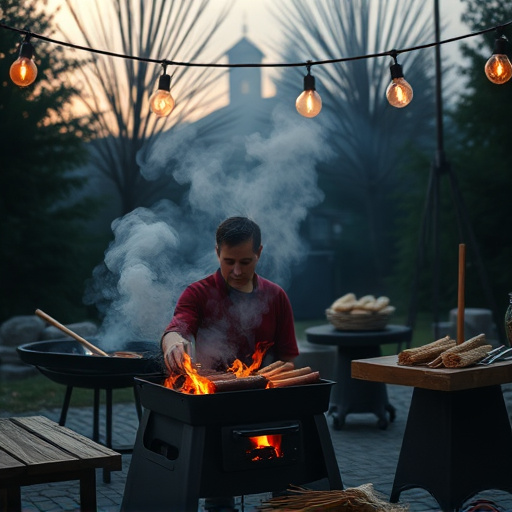To achieve tender, succulent BBQ ribs in the oven, maintain temperatures between 275°F (135°C) and 300°F (150°C). Preheat to 325°F (160°C) to 350°F (175°C), use slow-roasted cuts like short ribs or baby back ribs, and dry brine with a mix of brown sugar, paprika, garlic powder, salt, pepper, and other spices. Baste regularly, cover after 2 hours, and flip occasionally until tender, for the perfect BBQ ribs in oven recipe.
Discover the secret to achieving perfectly cooked BBQ ribs in your oven! This comprehensive guide reveals the ideal temperature and cooking times for mouthwatering results. Learn how factors like rib cut, seasoning, and oven preheating impact the process. From understanding the science behind it to mastering techniques like dry brining and basting, you’ll transform your oven into a BBQ paradise. Follow our step-by-step recipe for delicious, tender ribs that will impress your taste buds.
- Understanding the Ideal Cooking Temperature for BBQ Ribs
- Factors Affecting Ribs Cooking Time in Oven
- Preheating Your Oven for Optimal Results
- Choosing the Right Cut for Your Recipe
- The Art of Dry Brining and Rubbing Your Ribs
- Baste, Cover, and Check: Final Steps for Tender Ribs
Understanding the Ideal Cooking Temperature for BBQ Ribs
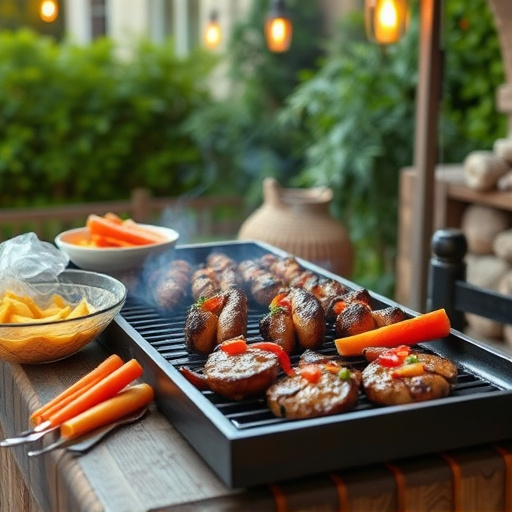
When it comes to cooking BBQ ribs in the oven, understanding the ideal temperature range is key to achieving tender, succulent results. The perfect cooking temperature for ribs should generally fall between 275°F (135°C) and 300°F (150°C). This specific range allows for slow, even cooking, which is essential for breaking down the collagen in the meat to create those melt-in-your-mouth ribs.
A lower temperature of around 275°F (135°C) helps to gently render the fat and soften the connective tissues without overcooking the ribs too quickly. This slow cooking process results in juicy, flavorful ribs with a tantalizing caramelized exterior. Conversely, cranking up the heat above 300°F (150°C) can lead to burnt outer layers while leaving the interior undercooked, a common pitfall when trying to master the perfect BBQ ribs in oven recipe.
Factors Affecting Ribs Cooking Time in Oven
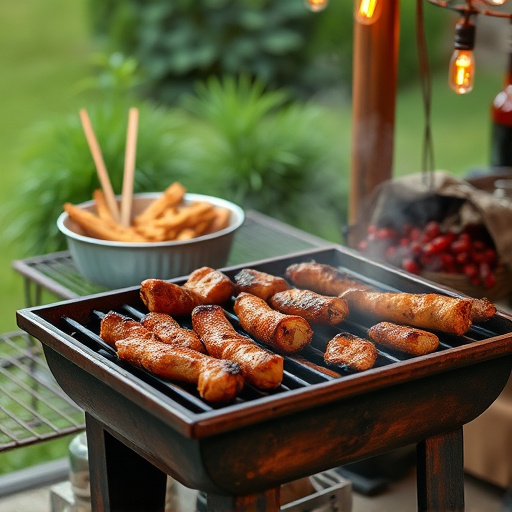
When it comes to cooking BBQ ribs in the oven, several factors influence the time it takes to achieve that perfect, tender result. One of the primary considerations is the initial temperature of your oven and how evenly it heats. Preheating your oven to the recommended temperature, usually around 325°F (160°C), ensures consistent cooking. The thickness and cut of your ribs are also critical; meaty St. Louis-style ribs or Memphis-style bones will take longer than thinner cuts.
Moisture plays a significant role in the cooking time as well, with BBQ ribs in oven recipes often recommending applying barbecue sauce or brushing on butter midway through the process to keep them from drying out. The type of pan used matters too; a shallow baking dish retains heat better, aiding in faster, more even cooking. Finally, the age and quality of your ribs can affect cooking time, with fresher, younger cuts potentially requiring less time than tougher, older ones.
Preheating Your Oven for Optimal Results
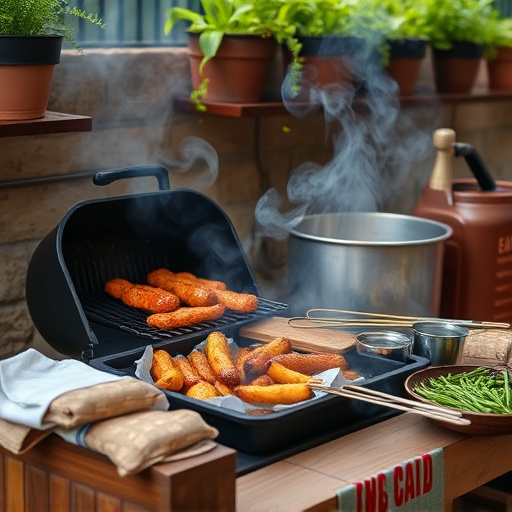
To achieve tender and delicious BBQ ribs in the oven, preheating your oven to the right temperature is crucial. Most recipes recommend a range between 325°F (160°C) and 350°F (175°C). This lower to moderate heat setting allows for slow cooking, which breaks down the collagen in the ribs, resulting in a tender texture. Starting with a preheated oven ensures that your ribs cook evenly, locking in moisture and enhancing their flavor.
When preparing your BBQ ribs in the oven recipe, allow enough time for the oven to reach the desired temperature. Preheating not only prepares the oven but also helps to create a stable cooking environment. This is especially important when baking ribs, as it ensures consistent heat distribution throughout the entire cooking process, contributing to their overall quality and taste.
Choosing the Right Cut for Your Recipe
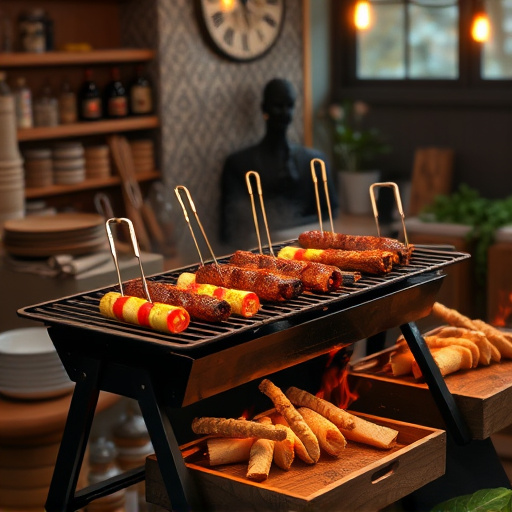
When it comes to choosing the perfect cut for your BBQ ribs in oven recipe, understanding the meat’s composition is key. Look for cuts that are slow-roasted and have a good marbling of fat—this ensures the ribs remain tender and juicy throughout the cooking process. Short ribs or baby back ribs are excellent choices, as they benefit from low-and-slow cooking methods.
Each cut has its unique characteristics, affecting both the taste and texture. For instance, short ribs come from the belly of the pig and have a robust flavor due to their fat content. In contrast, baby back ribs, taken from the top of the rib cage, offer a milder taste but are still juicy and tender when cooked properly. The right cut will elevate your BBQ ribs in oven recipe, making it a true culinary delight.
The Art of Dry Brining and Rubbing Your Ribs
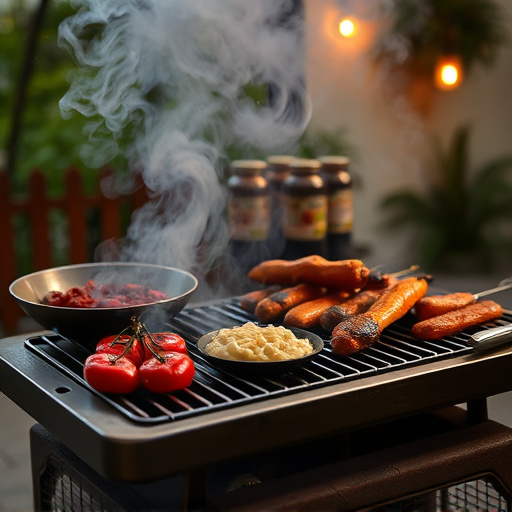
The art of dry brining and rubbing is an essential step in preparing mouthwatering BBQ ribs in the oven. This technique involves seasoning your ribs generously with a blend of spices, typically known as a ‘rub.’ The dry brine enhances the meat’s flavor by drawing out moisture and then reabsorbing it during cooking, resulting in tender, juicy ribs.
When brining, you want to create an even layer of spice on all sides of each rib. A good rub usually combines brown sugar, paprika, garlic powder, salt, pepper, and other aromatic spices. This mixture is rubbed onto the ribs, ensuring every crevice is filled with flavor. The process can be done ahead of time, allowing the ribs to marinate for a few hours or even overnight in the fridge, intensifying the taste profile before baking.
Baste, Cover, and Check: Final Steps for Tender Ribs
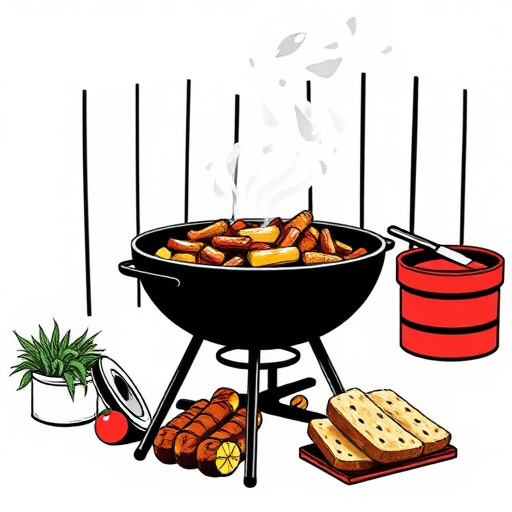
When cooking BBQ ribs in the oven, the final steps are crucial to achieving tender, juicy results. After placing your ribs in the oven, baste them regularly with a BBQ sauce or a mixture of butter, brown sugar, and spices. This step adds flavor and moisture, ensuring your ribs don’t dry out during the cooking process. A simple baste every 30 minutes should do the trick!
Covering your ribs partway through cooking is another essential technique. After about two hours, cover the dish with aluminum foil to trap in the heat and steam. This step helps to speed up the cooking time and makes the ribs incredibly tender. Remember to check on them regularly, flipping occasionally if needed, until they reach your desired level of doneness.
